The {Meleagris gallopavo silvestris}, or Eastern for short, is the King of Spring. Inhabiting a larger range than all other wild turkey subspecies combined, the Eastern gobbler leaves his three toed track in nearly every field, forest, riverbank and ridgetop across the eastern half of the United States. Known for his thunderous gobble, wary nature and generally large size, Easterns hold records for the longest spurs, longest beard and heaviest weight ever harvested by those lucky enough to hunt them. He’s an American Original and a truly iconic symbol of the spring woods.
As widespread as Easterns are, their habitat is diverse. From Deep South pine plantations, to Midwestern crop fields, to Appalachian hardwoods and the Atlantic coast, the Eastern turkey supports a wider range and more hunting opportunities than all of the other wild turkey subspecies combined.
The largest of all subspecies, Easterns can reach up to four feet tall and weigh over 30 lbs. The Eastern boasts records for the most number of beards, longest beard and the longest spurs. He's also known for having the loudest gobble of all the subspecies.
EASTERN'S AT A GLANCE
- Primary Location: The Eastern half of North America, excluding the Florida Peninsula
- Estimated Population: 4,575,000 (Population estimates based on 2014 survey data from state wildlife agencies)
- Average Male Adult Weight: 18-30 lbs
- Average Female Adult Weight: 8-12 lbs

Wing Feathers
A wild turkey’s wing feathers feature white and black barring at varying widths, depending on the subspecies. An Eastern’s wing feather’s white and black barring is relatively equal in size.
Tail fan

Tail feather coloration is the easiest way to differentiate the four wild turkey subspecies. Used to display for hens during the spring, a gobbler's 18 tail feathers are the same length in adults, but different lengths in juveniles. Easterns have Chocolate-brown tailfeather tips with chestnut brown covert feathers
Beard

Spurs

The spurs on the back of a turkey’s leg are made of smooth, shiny keratin and range in color from black to pink. Both sexes are born with small button spurs, but they continue to grow in male turkeys. An Eastern’s spurs can be very large in size, varying in length and sharpness depending on the terrain.
Gobble

The pitch of a gobble from different subspecies can be quite different, ranging from 400-4,500 HZ. Easterns have a lower pitch, heard as a booming, thunderous gobble. He’s got a 5 out of 5 in strength and known for his thunderous gobble
The Grand Slam Subspecies of the Wild Turkey
Have you completed a Grand Slam hunt? The “Grand Slam Subspecies of the North American Wild Turkey” by Ryan Kirby celebrates a true American original - the wild turkey. Essential for any turkey hunting enthusiast, this print is perfect for the office, hunting lodge, or mancave.
Customizable Eastern Wild Turkey Prints
Whether it’s the people, the location, or the bird, every turkey hunter has a hunt they’ll never forget. Now, you can commemorate that special hunt with the ultimate piece of turkey art!
Our customizable Rio Grande Wild Turkey print shell highlights the unique characteristics of Osceola Turkey and allows you to write in the hunter’s name, harvest date, location, weight, spur size, beard length, and story of the hunt in the “Field Notes” section. You can also apply your photo directly on the print with an adhesive. Makes a great gift for the die-hard turkey hunter, father, or hunting mentor.
Each print is still signed and stamped by Ryan with his Seal of Authenticity.




